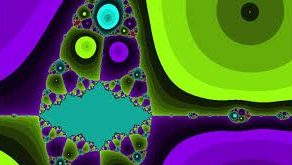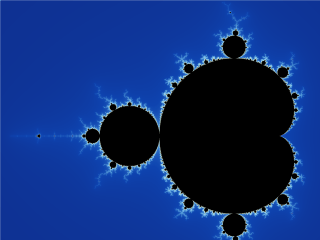
Art Therapy
“One of the basic rules of the universe is that nothing is perfect. Perfection simply doesn’t exist…..Without imperfection, neither you nor I would exist” ― Stephen Hawking



 Yes, we live in chaos today. The word pops up a few times a day in radio, TV, and newspaper articles. We experience uncertainty in our daily life and our ability to function. The need to adjust constantly to new instructions and realities is daunting.
Yes, we live in chaos today. The word pops up a few times a day in radio, TV, and newspaper articles. We experience uncertainty in our daily life and our ability to function. The need to adjust constantly to new instructions and realities is daunting.
But no, I am not referring to that kind of chaos. I am talking of the book Chaos, Making a New Science by James Gleick. My husband is reading it for the second time, and when he reads a book that fascinates and excites him, he needs to share with me. He excitedly reads aloud passages that are meaningful and important. This happens more often these days when we are together for long parts of the day, and especially on the Sabbath when there are no other distractions like radio or computer. Yesterday he tried to convince me of the importance of imaginary numbers. He told me that they were invented to fill the conceptual vacuum produced by the question: What is the square root of -1? My eyes started glazing over, my wheels were grinding and I tried to follow attentively, but for the likes of me, I could not fathom the excitement it produced in him. You see, it is not as if he discovered imaginary numbers for the first time, he is a scientist, a biophysicist, but I am an art therapist. He kept asking me, “is it not exciting? You see the combination of real and imaginary numbers allows us to do new kinds of calculations with polynomial equations. Complex numbers can be added, multiplied, factored, averaged, integrated.”
And that’s where he lost me completely. I stopped him and reminded him that I do not talk Mathematics. I am multilingual for sure, but that language evades me. “No way,” he retorted. “Math is not a language.” I argued that like an alphabet of letters, and rules of grammar, the numbers are combined in certain forms, so the person reading them understands the symbols, understands that = is a symbol for “same as” and that can be a sum of 1 orange plus 1 orange equals 2 oranges, or apples or people. He was not convinced. OK, I did learn basic math, even geometry, but that complex number language was beyond me. I reminded him of what happens when you explain something that you are convinced the other side is sure to understand, but they have no clue what you mean.
It was summertime, and unlike other years when we headed west to the Rockies, that year we headed east to the Gaspé peninsula and to New Brunswick. Driving in our special-needs Land Rover, we broke an axle in Quebec City and had to wait for a few days for the replacement part to arrive so we could continue our trip. After the repairs were done, we continued on our way. About noon a red “engine” light on the dashboard came on, and my husband was sure it had to do with the electric system. We came into a small town in the Gaspé and found an auto electric shop. We all piled out of the car, and my husband started explaining to the owner what was wrong and what he suspected needed to be done. The owner looked at him with the same glazed eyes I had last Saturday when he was enthusing about imaginary numbers. The children ran out exploding with laughter, and I butted in with my elementary French to let the owner know what was wrong and ask if he could fix it, as well as how long it would take. He answered politely, “Oui Madame, environ une heure et demi”. We went outside to wait, and my husband was livid. “Why did you have to mix in?” he asked. “Because,” I answered, “you were talking in perfect Hebrew, with words I did not realize you even knew!” He was not convinced, even when the children told him it was true, and that is why they ran out laughing.
Well, to me, Math is a foreign language, just like Hebrew was for the Québécois mechanic. However, I guess that any language can be learned if you put your mind to it, and if you are not a “left brain,” like my husband. You see, he has 2 areas for languages in his brain. One is called “English” and the second “Others, all mixed together.” Whereas I am a “right brain,” but with extra effort I can bridge and attempt to understand a bit of the Math language when it looks interesting. And in spite of myself, when he showed me the interesting colorful family of shapes that appear when you plot functions in the Complex plane, I got hooked.
Now I started understanding the origin of the beautiful Mandelbrot fractals which fascinated me with their endless variety of shapes, colors, and movement. To me they are the ultimate mandalas. The book tells us that the programs that made the most striking and deeply magnified pictures had to run on large mainframe computers. Nowadays my laptop can run the same calculations and will produce the most interesting and pleasing fractal pictures.
 Yet how is all this related to chaos? It turns out that chaos, disorder in nature, exists but was a mystery to explain. It exists in the atmosphere, in the turbulent sea, in the fluctuation of wildlife populations and in blood flow, as well as brain-wave and heartbeat oscillations. It is important to understand whether there is an order or pattern that governs chaos. Indeed, it is fascinating to discover how different branches of science, mathematics, physics, biology, engineering and even economics are benefitting from the study of chaos. As only one example, understanding patterns of flow and turbulence aids the medical biophysicist researching blood flow and the formation of plaques in the arteries, which may eventually become blocked as a result. Insights gleaned from these studies may in time lead to ways to prevent such plaques. Since chaotic phenomena exist in all systems of our planet and beyond, understanding the orderly principles behind it is one of the most fascinating areas of study today.
Yet how is all this related to chaos? It turns out that chaos, disorder in nature, exists but was a mystery to explain. It exists in the atmosphere, in the turbulent sea, in the fluctuation of wildlife populations and in blood flow, as well as brain-wave and heartbeat oscillations. It is important to understand whether there is an order or pattern that governs chaos. Indeed, it is fascinating to discover how different branches of science, mathematics, physics, biology, engineering and even economics are benefitting from the study of chaos. As only one example, understanding patterns of flow and turbulence aids the medical biophysicist researching blood flow and the formation of plaques in the arteries, which may eventually become blocked as a result. Insights gleaned from these studies may in time lead to ways to prevent such plaques. Since chaotic phenomena exist in all systems of our planet and beyond, understanding the orderly principles behind it is one of the most fascinating areas of study today.
I still think that each area of science, like each group of people in the world, has a unique language. Without this unique language communication is hindered, thus progress and collaboration are not possible. Using the word “equal” in mathematics does not have the same meaning as in political science, for example, when the talk is of people who are equal. Therefore, I still think that math is a foreign language to me, and without me making an effort to learn its main alphabet I could not have progressed to understand even the basics of the chaos. If I think of it, there is perhaps, after all, a similarity between the chaos, which is a word used to describe phenomena which we do not yet fully understand, and the chaos in our life as we experience it today. In a river, turbulence develops at bifurcations, or due to increased pressure or flow. We only need to pass the turbulent region, and hopefully our lives will flow peacefully again.